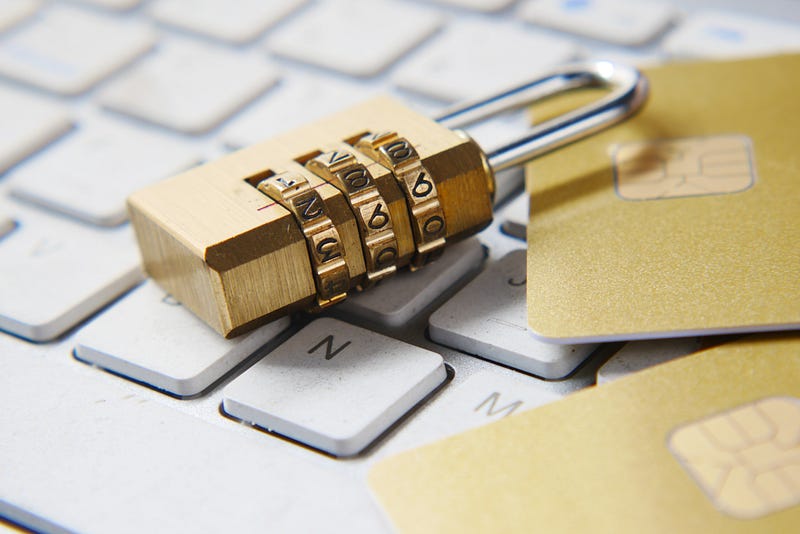If you have multiple online accounts, you probably know how hard it is to remember all your passwords. You might be tempted to use the same password for everything, or write them down somewhere, but that’s not very secure. Hackers can easily guess or steal your passwords to access your personal information, financial data, and even your identity.
That’s why you need a password manager. A password manager is a software application that helps you create, store, and manage all your passwords in one place. It can also generate strong and unique passwords for each of your accounts, so you don’t have to worry about remembering them or making them up yourself.
How Does a Password Manager Work?
A password manager is like a vault for all your usernames and passwords. The vault is locked for security, and the only way to access it is with a master password. Entering your master password will unlock the vault and give you access to the login credentials you need.
When you sign in to a website, the password manager will fill in your username and password for you, or let you choose from a list of saved accounts. You can also use the password manager to generate a new password for a new account or change an existing one.
You might not believe me, but I have no idea what my Amazon password is. If you held my feet over hot coals until I spilled the beans, my feet would burn. That’s because, when I log in to Amazon, I open the vault to my password manager and paste in the saved password.
And that is one of the best things about using a password manager. You only have to remember one password for the rest of your life. If you can commit your master password to memory, you will have a far simpler online experience when logging in to websites.

Why Should You Use a Password Manager?
Using a password manager has benefits for your online security and convenience. Here are five reasons why you should use one:
1. Stronger Passwords
You can create strong and unique passwords for each of your accounts, without having to remember them or write them down. This reduces the risk of hackers guessing or cracking your passwords, or using them to access other accounts if one of them is compromised.
2. Saves You Time
Most password managers offer you the option to log into websites with just one click, instead of typing in your credentials every time. They also let you easily update or change your passwords whenever you need to.
3. More Than Just Passwords
You can store other sensitive information in your password manager, such as your credit card numbers, addresses, security questions, notes, etc. You can also set up your information to automatically fill in online forms. This makes online shopping easier and safer.
4. One Account, Many Devices
You can sync your passwords across all your devices, such as your computer, smartphone, tablet, etc. This means you can access your passwords from anywhere and on any device.
5. Sharing is Caring
Most password managers let you share your passwords securely with trusted people, such as family members or coworkers. You can also revoke access at any time if needed.

Is a Password Manager Safe?
Occasionally, password managers get hacked. It doesn’t happen often, and it doesn’t happen to all password managers, but it does happen.
LastPass has dealt with several security breaches over the years, but because of the way your data is stored, it rarely gets compromised.
Password managers encrypt your passwords and other credentials using a technique called “zero-knowledge” encryption. This means that only you can decrypt and view your data.
The same goes for your master password. If you forget it, your password manager can’t tell you what it is because they don’t know. That makes resetting a master password trickier than a normal password, but you can remember one password, right?
How to Choose a Password Manager?
There are many password managers to choose from, but not all of them are equally reliable and trustworthy. (Yes, I’m looking at you, LastPass). So, here are some features to look for when choosing a password manager:
1. Security
The password manager should use strong encryption methods to protect your data, such as AES-256 or PBKDF2. It should also offer two-factor authentication (2FA) or multifactor authentication (MFA) to add an extra layer of security to your master password.
2. Privacy
The app you choose should have a clear and transparent privacy policy that explains how they handle your data and what they do with it. It should also have a zero-knowledge encryption model that ensures that only you can access your data and not the provider or anyone else.
3. Ease of use
Your password manager should have a user-friendly interface that makes it easy to create, store, and manage your passwords. It should also have browser extensions and mobile apps that integrate seamlessly with your online activities and devices.
4. Features
A good password manager should offer various features that enhance your online security and convenience, such as a password generator, password changer, password auditor, secure sharing, emergency access, etc.
5. Support
The last thing I will mention is something that often gets overlooked: reliable and responsive customer support that can help you with any issues or questions you might have. Test this out by emailing support with a question before you sign up for their service.
Conclusion
Using a password manager is one of the best ways to protect your online accounts and personal information from hackers and cybercriminals. It can also make your online experience more convenient and enjoyable by saving you time and effort.
The password managers that I have used and recommend to others are Bitwarden, 1Password, and Dashlane. Yes, there are others out there, but in my experience, these are three of the best.
So, if you haven’t used a password manager before, there’s no time like the present. Your future self will thank you!




